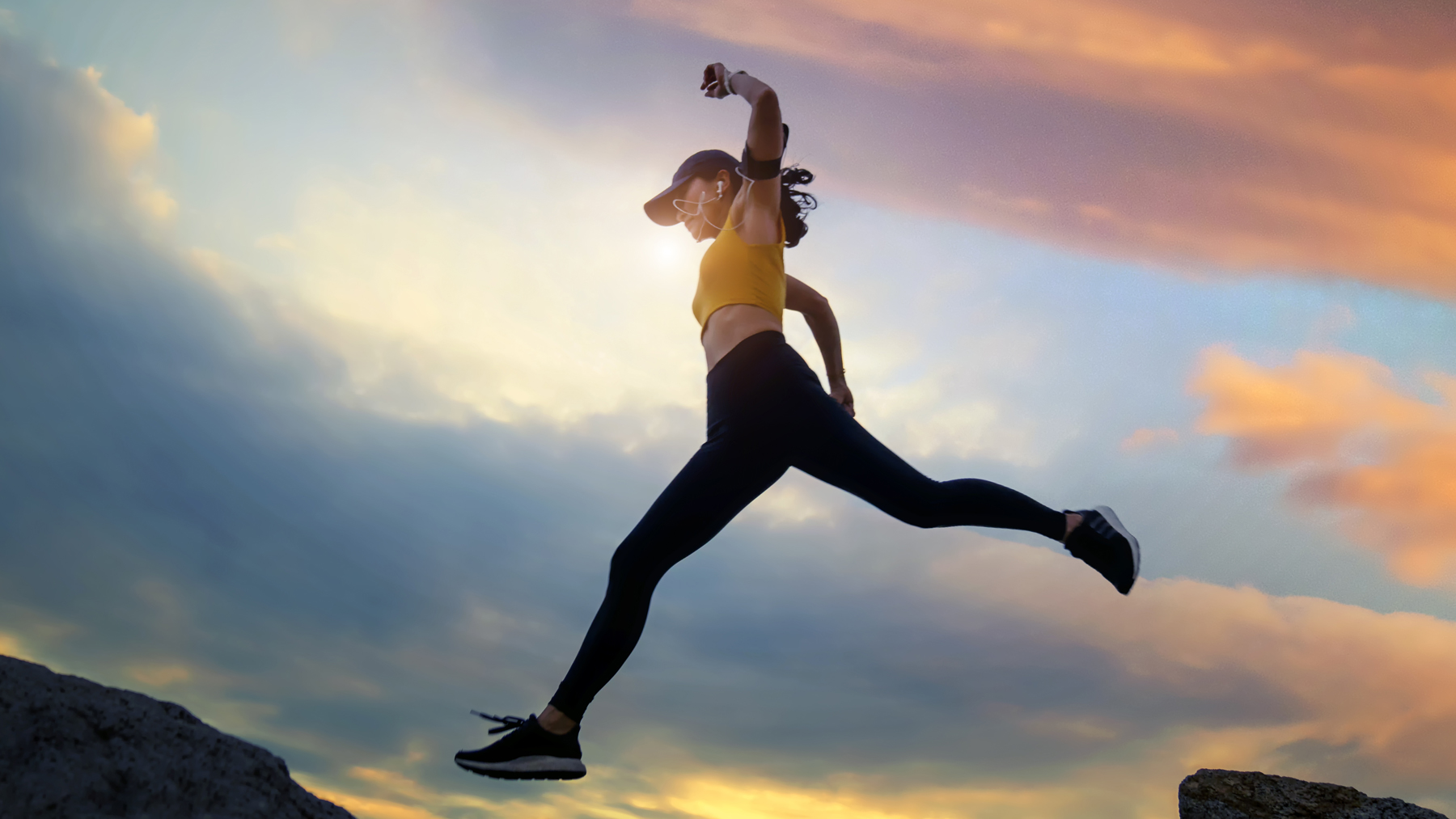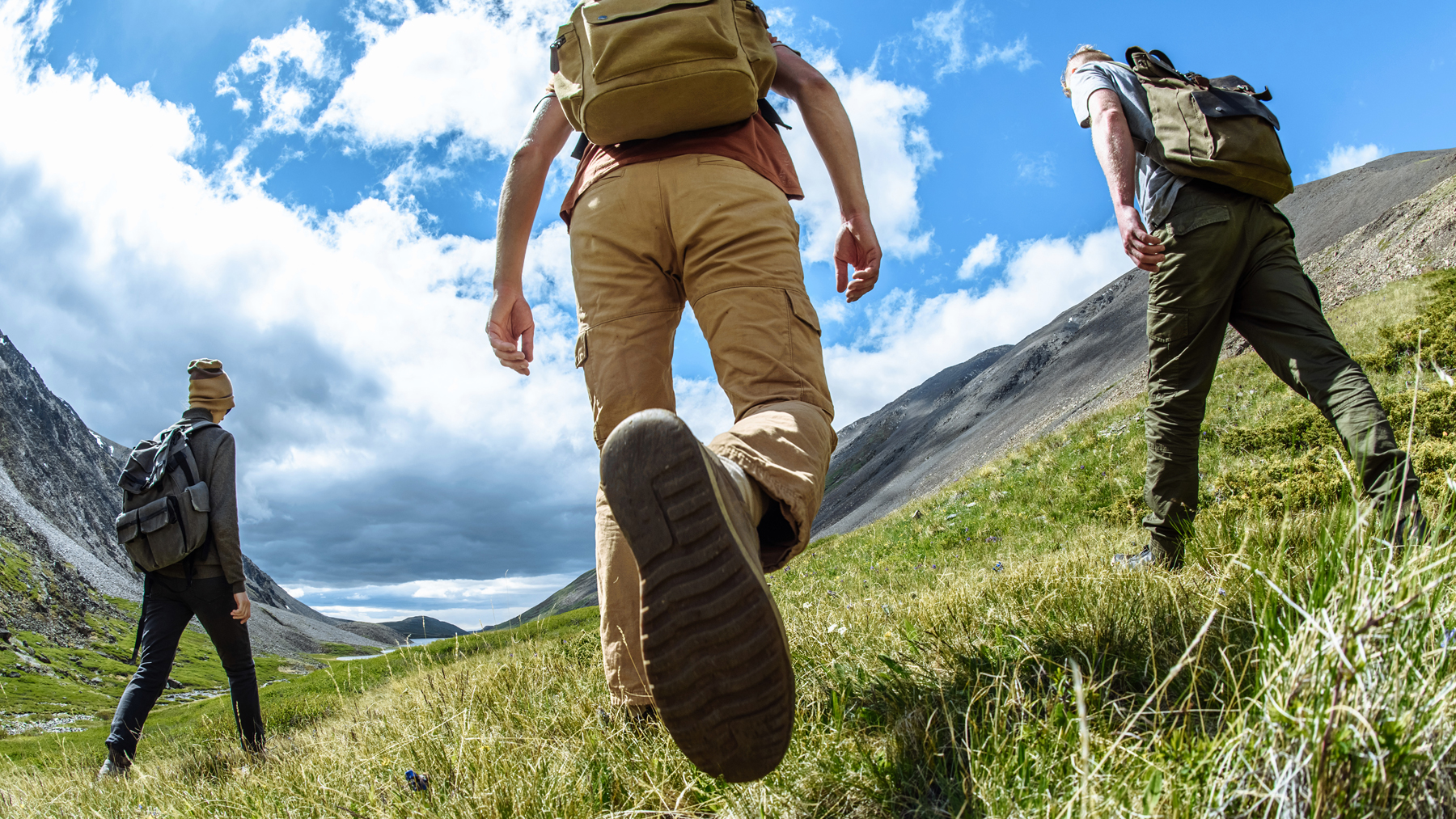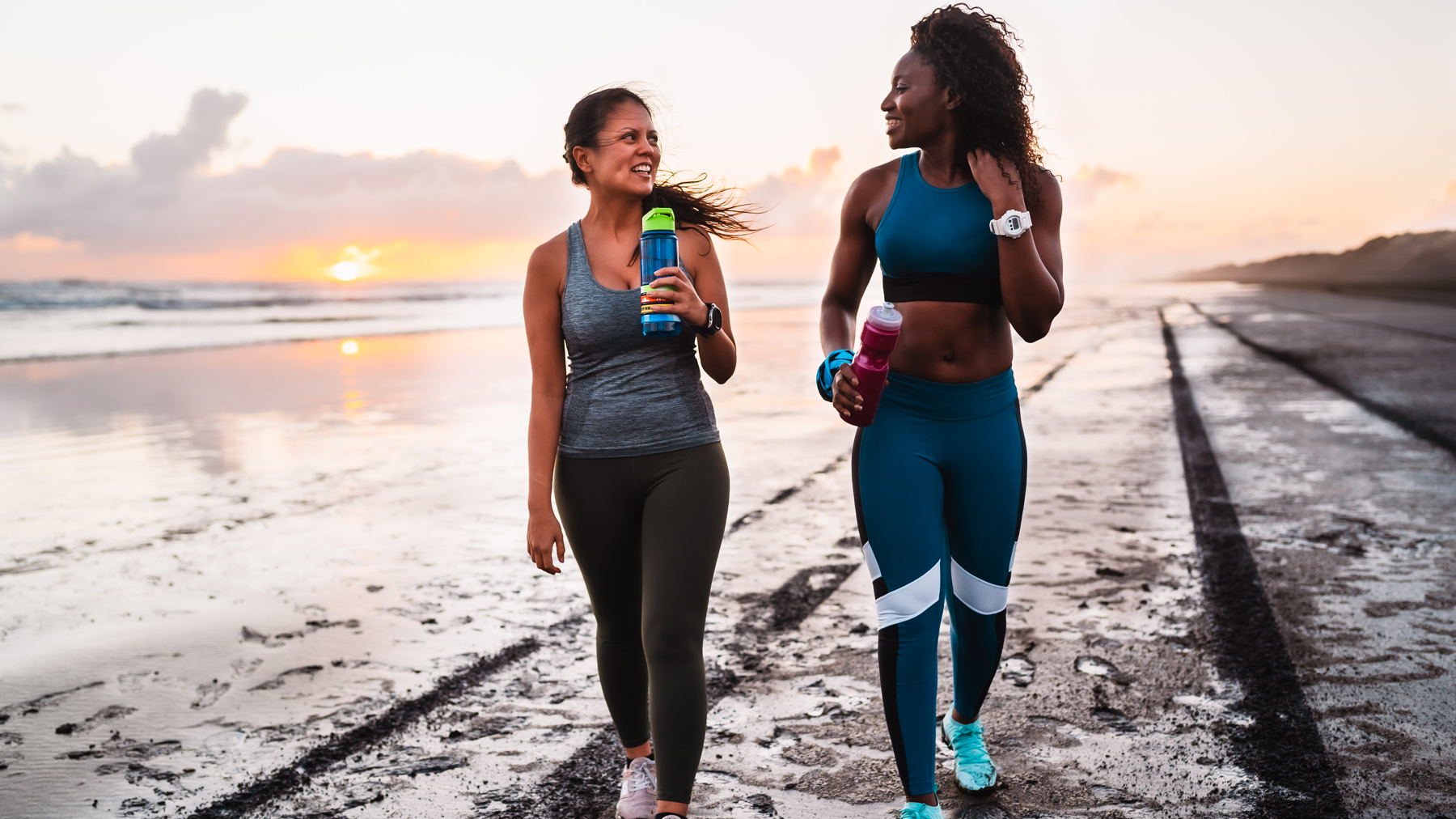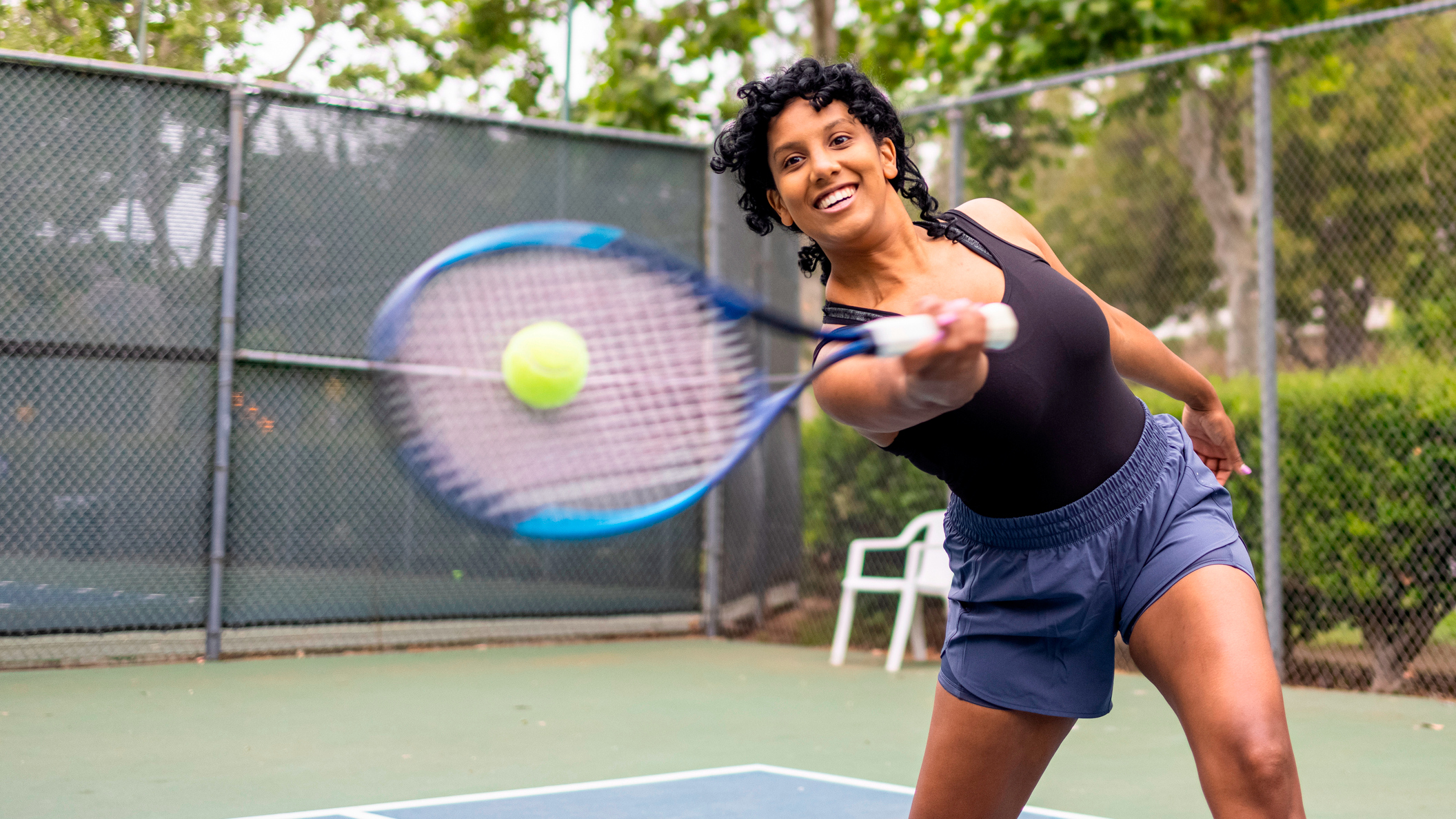Hiking vs walking: which is a better workout?
Hiking vs walking – we look at the differences and benefits


Hiking vs walking: which is a better workout? Both are great forms of cardiovascular exercise with physical and mental health benefits.
Most people will own their own walking gear but if you don’t, you can find some of the best shoes for walking in our Fit&Well roundup. Suitable footwear will support your feet and ankles during both these heart-friendly aerobic exercises. But perhaps you aren’t clear on the actual difference between hiking and walking and which is a better workout.
“Walking and hiking are great forms of low impact exercise, which can help to maintain a healthy weight and lose body fat,” Omar Mansour, sports scientist and trainer for audio-based fitness app WithU Training, told Fit&Well.
“Both exercises can also prevent risks of high blood pressure, stroke, heart disease and type 2 diabetes, strengthen bones and muscles and improve cardiovascular fitness levels.
“Hiking is more intense than walking but still relatively low impact compared with running, so it’s a great way to get the heart rate elevated and even build some lower body muscle mass.”
In this article, we talk more to Mansour, as well as joint experts Giulia Guerrini and Palak Shah to find out about the differences and benefits of hiking and walking, and which is the better workout.

Omar is a Personal Trainer and UKA Running Coach. Having competed as an 800m athlete, Omar loves to bring a flavour of his athletic background to all of his workouts. Over the years he has worked alongside some of the world's leading running brands helping many people achieve their goals, with a wealth of knowledge and technical expertise.

Giulia Guerrini is the Superintendent Pharmacist at digital pharmacy medino. With a Master's in Chemistry and Pharmaceutical Technology from the University of Ferrara (Università Degli Studi Di Ferrara) and many years of experience, she’s medino's go-to on all things pharmacy: from expert healthcare advice to effective product recommendations.

Palak Shah is a co-founder and Head of Clinical Services at Luna, the leading in-home physical therapy platform, and is a passionate healthcare leader with orthopedic specialist board certification and physical therapist for 15+ years.
What is the difference between hiking and walking?
Hiking differs from walking as it involves an ascent and descent, while a walk is on a flat surface, explains Mansour. “Hikes tend to be longer than walks and require suitable equipment to deal with the different terrain.
“Hiking uphill whilst getting out and about in nature is one of the best exercises you can do. If you’re looking to get fit faster and burn more calories, hiking will be more effective than walking.”
Get the Fit&Well Newsletter
Start your week with achievable workout ideas, health tips and wellbeing advice in your inbox.
When does a walk turn into a hike?
Mansour says: “A walk turns into a hike if you are walking up and down steep hills. A hike tends to be harder and longer than a walk, as this is usually done on trails as opposed to a flat surface. If there is different terrain and incline, then the walk becomes a hike.”
What are the benefits of hiking?
With a low impact aerobic exercise like hiking you can experience all the cardiovascular benefits, with minimal stress and strain on the body.
Plus, according to BMC Women's Health journal, hiking (and walking) is a weight-bearing exercise, which means your bones and muscles work harder against gravity, in turn boosting bone density. Bone is living tissue and becomes stronger with exercise.
“Hiking is more physically demanding than walking, as you're using more energy to go up and down hills at a high incline. On a hike, you will encounter different inclines - from flat to high terrain where you might have to scramble - so this requires more stamina as opposed to walking,” explains Mansour. “You also will strengthen your feet, ankles and lower limbs as the different terrains will challenge you more than walking on the flat.”
The International Journal of Environmental Research and Public Health reported that hiking can also lower blood pressure, and a healthy blood pressure means you are less at risk of heart disease and stroke.
Plus, Stanford researchers found that walking and hiking in nature boosted mental health and could reduce depressive symptoms. The study, published in Proceedings of the National Academy of Science, found that people who walked for 90 minutes in nature, as opposed to a high traffic urban setting, showed reduced activity in an area of the brain associated with a key factor in depression.
Other studies have shown a link between hiking and lower cholesterol levels. This is because compared with more stationary cardio exercises, walking over irregular terrain engages the core muscles in a way that’s hard to mimic on a gym machine.

What are the benefits of walking?
As we’ve heard, hiking can make bones stronger and the same thing happens with walking. A study published in the American Journal of Medicine found that healthy postmenopausal women who walked around one mile a day had higher whole-body bone density than women who walked shorter distances. The research also found that walking was effective in slowing the rate of bone (calcium) loss from the legs.
And similar to hiking, walking can help you maintain a healthy weight, says Mansour. “It also improves your fitness levels, contributes to a healthier sleep pattern, lowers blood pressure levels, increases your energy levels, all without having to spend any money on a gym or equipment.
“Walking outside in nature has been proven to boost mood and help improve our mental state,” he says.
It could even help you overcome your sweet tooth, according to researchers from the University of Exeter. They found a 15-minute walk could curb chocolate cravings and even reduce the amount of the sugary treat you eat when stressed.
Is walking a safer form of exercise than hiking?
It depends on your fitness levels and health conditions, but Mansour says with walking you are at less of a risk of injury to your knee joints, because you are on a flat surface.
“Whilst hiking, you are often at higher altitude and have to scramble rock, which can be more dangerous. Depending on your age and fitness levels you should pick the suitable form of movement for you,” he says.
“Too much walking or hiking can place stress fatigue on the body, so you will need to make sure you recover with rest. Despite uphill hiking being strenuous due to steep inclines, downhill hiking can also place pressure on your knee joints and cartilage surrounding the area as compressive forces are three to four times greater when going downhill, according to research.”
Making sure you have enough recovery after a hike or walk is important to avoid injury or overworking an area of the body.
Palak Shah, a medical expert who specializes in joint health, agrees. She says: “Walking is very important for your joints - it increases activation and strength of muscles around the joint, which in turn protects the joint by decreasing pressure on your bones.”
Shah, who is also co-founder at Luna, says: “Hiking is safe, but it’s important to understand that it increases pressure on our joints. Steep hikes increase a lot of pressure and flat hikes are like walking on an uneven surface. So start slowly, strengthen your body, and let pain be your guide.
“Joint health is a balancing act, strengthening all muscles around the joint is key and muscles need to work well with each other to protect the joint. If you are experiencing pain, seek care sooner rather than later so you can keep walking and hiking without hurting your joints.”
Giulia Guerrini, lead pharmacist at digital pharmacy medino, said walking was a great way to ease pain and stiffness in joints and is good for people with conditions like arthritis.
“Research has found that as little as 10 minutes of walking per day can help older adults deal with arthritis in their ankles, feet, hips and knees. Walking is a low-impact form of exercise, which increases blood flow to cartilage around your body, helping it get all the important nutrients that it needs to decrease pain and lubricate joints,” she says.
“Hiking engages even more muscles than walking on flat terrains such as pavements, though people who struggle with joint conditions might feel uncomfortable or worried due to the uneven surfacing. If possible, I would recommend planning your hiking route early in the day to avoid crowds, choose well-marked trails that you’re familiar with and try to hike on level ground – especially if you have any concerns about your safety.
“Wear hiking shoes as opposed to gym shoes as they can provide more support for your ankles, in case the path has some steep sections. It’s also worth mentioning that some people with arthritis may experience heightened symptoms when hiking, including joint pain, particularly on damp and windy days with low atmospheric pressure. If you need a bit more support, you can also consider taking hiking sticks with you.
“That being said, by no means is hiking unsafe for your joints – you just need to be realistic about your abilities. There’s absolutely no shame in starting gradually, scaling upwards from a 15-minute walk around your neighborhood with a long-term goal of a two-mile hike. Hiking offers the same benefits as walking, but you’ll boost cardiovascular fitness more, keep your joints more mobile and strengthen your muscles more.”

Hiking vs walking: which is better?
Both hiking and walking offer a good workout, but when it comes to which is better, research published in American Journal of Lifestyle Medicine found that hikers burned more calories than runners or walkers, because they tended to spend longer outside enjoying nature than they would if they’d been exercising in a different environment.
“Hiking requires more muscle work and is more strenuous due to the inclines, but you can still get a good workout from a walk,” says Mansour.
Guerrini says: “According to the Department of Health and Human Services, adults should be getting at least 150 minutes of moderate aerobic activity per week but many fail to consider how easily it can be achieved through cutting out a few car journeys and opting to walk instead - 150 minutes per week breaks down to a little over 20 minutes per day, which is certainly a realistic walking target.”
Mansour says: “Both hiking and walking are beneficial forms of exercise. I'd advise to get out there and walk as much as you possibly can, at a challenging pace. Hiking is very beneficial for weight loss and your mental health, especially as this encourages you to get out in nature!
“If you are in a city and don’t have access to beautiful hikes in nature you can still aim to boost your total daily energy expenditure by getting more steps in your day. Look for those opportunities in your everyday life. Instead of standing on the escalator, walk them. Don’t get the bus home, walk part or the entire journey. At lunchtime, take a walk to get your lunch. These are some ideas of ways that you can boost your step count and increase your overall movement.”
Don’t miss our article on walking shoes vs running shoes plus our roundups for the best running shoes for women and the best running shoes for men.
Maddy Biddulph is a freelance journalist specializing in fitness, health and wellbeing content. With 26 years in consumer media, she has worked as a writer and editor for some of the bestselling newspapers, magazines and websites in the US and UK.
She is also a qualified L3 personal trainer and weight loss advisor, and helps women over 40 navigate menopause by improving their physical and mental strength. At Maddy Biddulph Personal Training, she runs one-to-one and small group training for menopausal women who want to get fit to ease symptoms and feel like themselves again.
-
 I do these two things every day to stay fit and healthy, says the newest star trainer on Chris Hemsworth's fitness app
I do these two things every day to stay fit and healthy, says the newest star trainer on Chris Hemsworth's fitness appHere's how Centr's Korey Rowe trains for longevity
By Sam Rider Published
-
 I thought sports weren't for me, until I realised they're a game-changer for ticking off cardio
I thought sports weren't for me, until I realised they're a game-changer for ticking off cardioI swapped HIIT and running for tennis—and I've never felt better
By Alice Porter Published